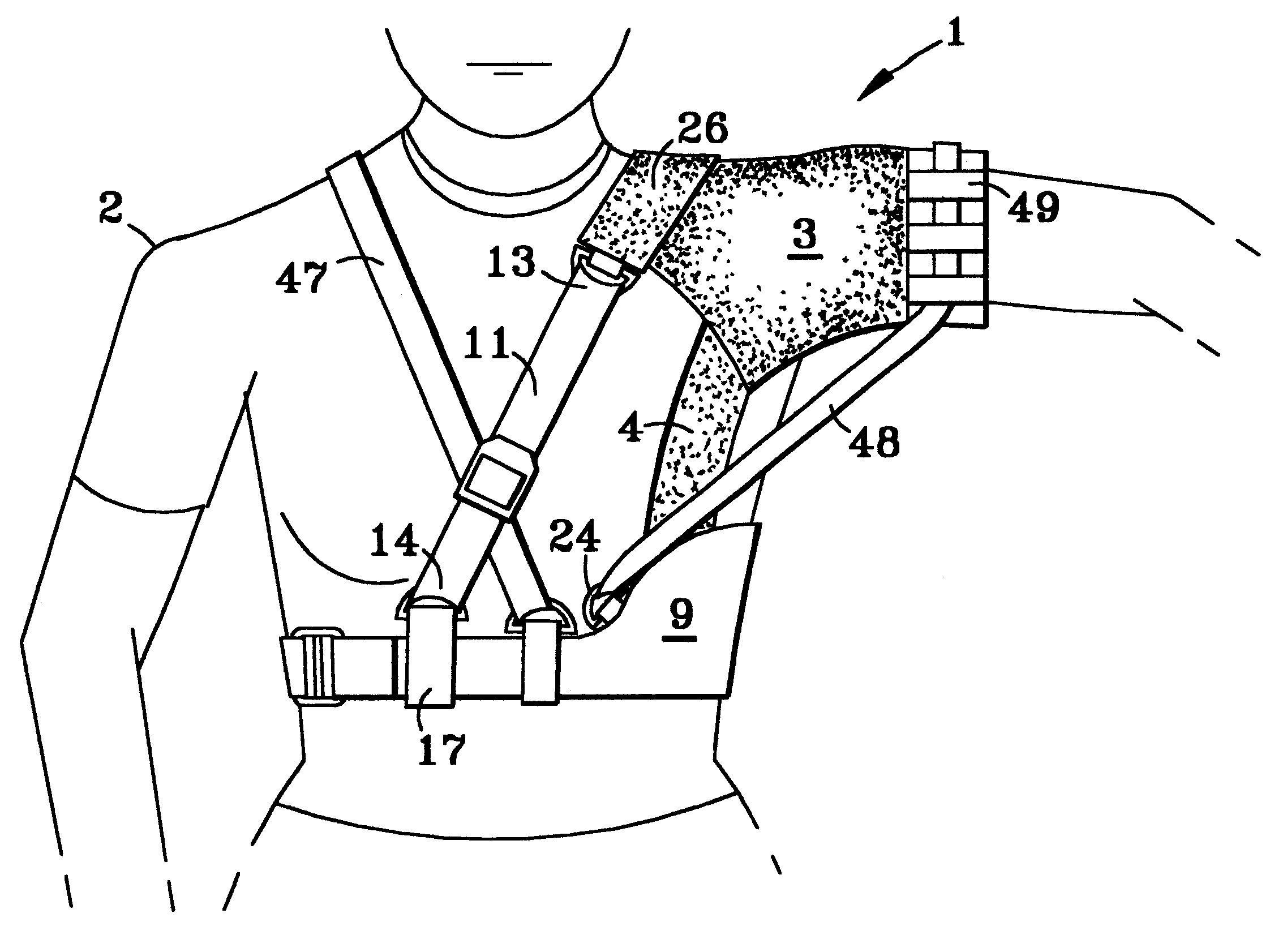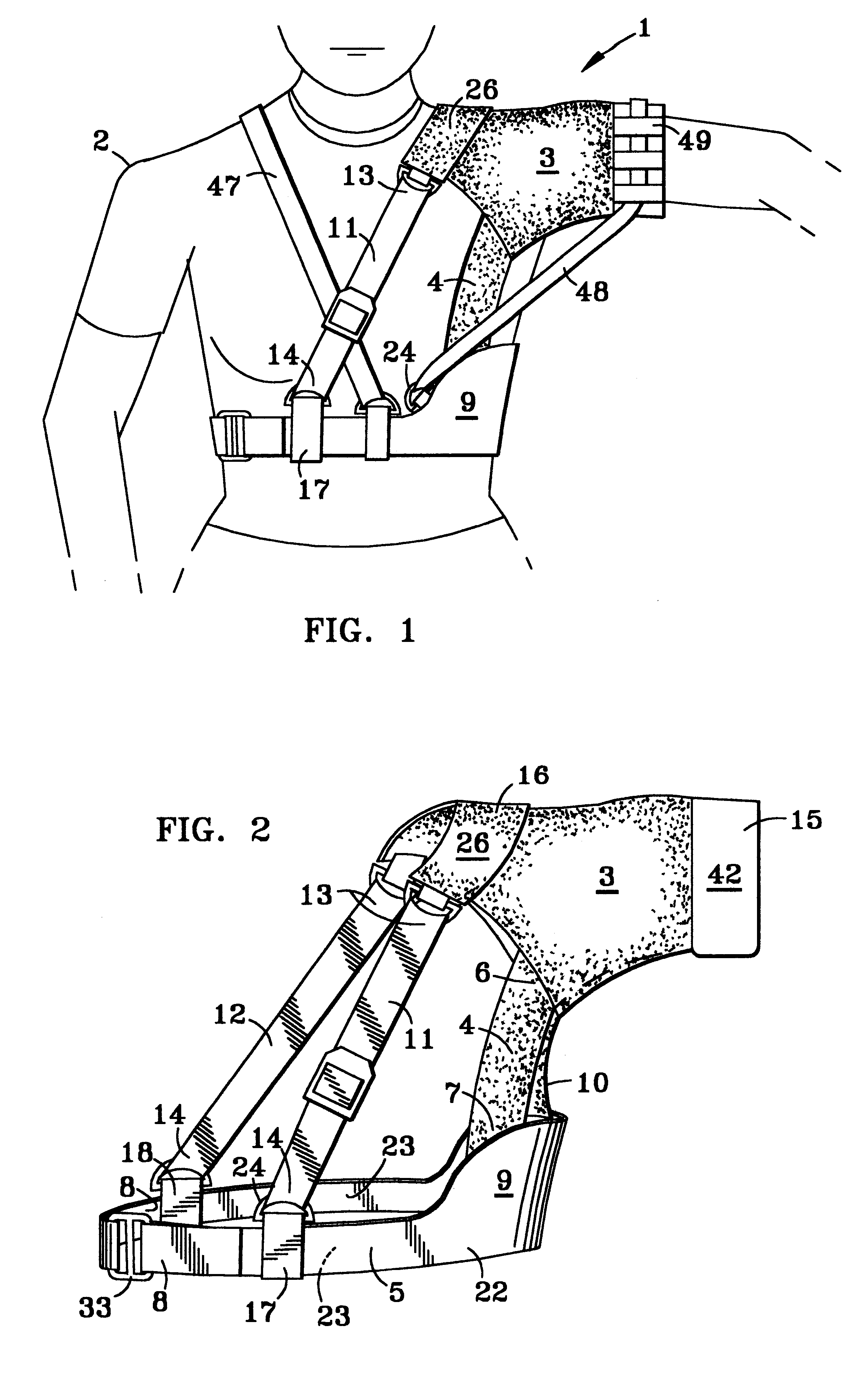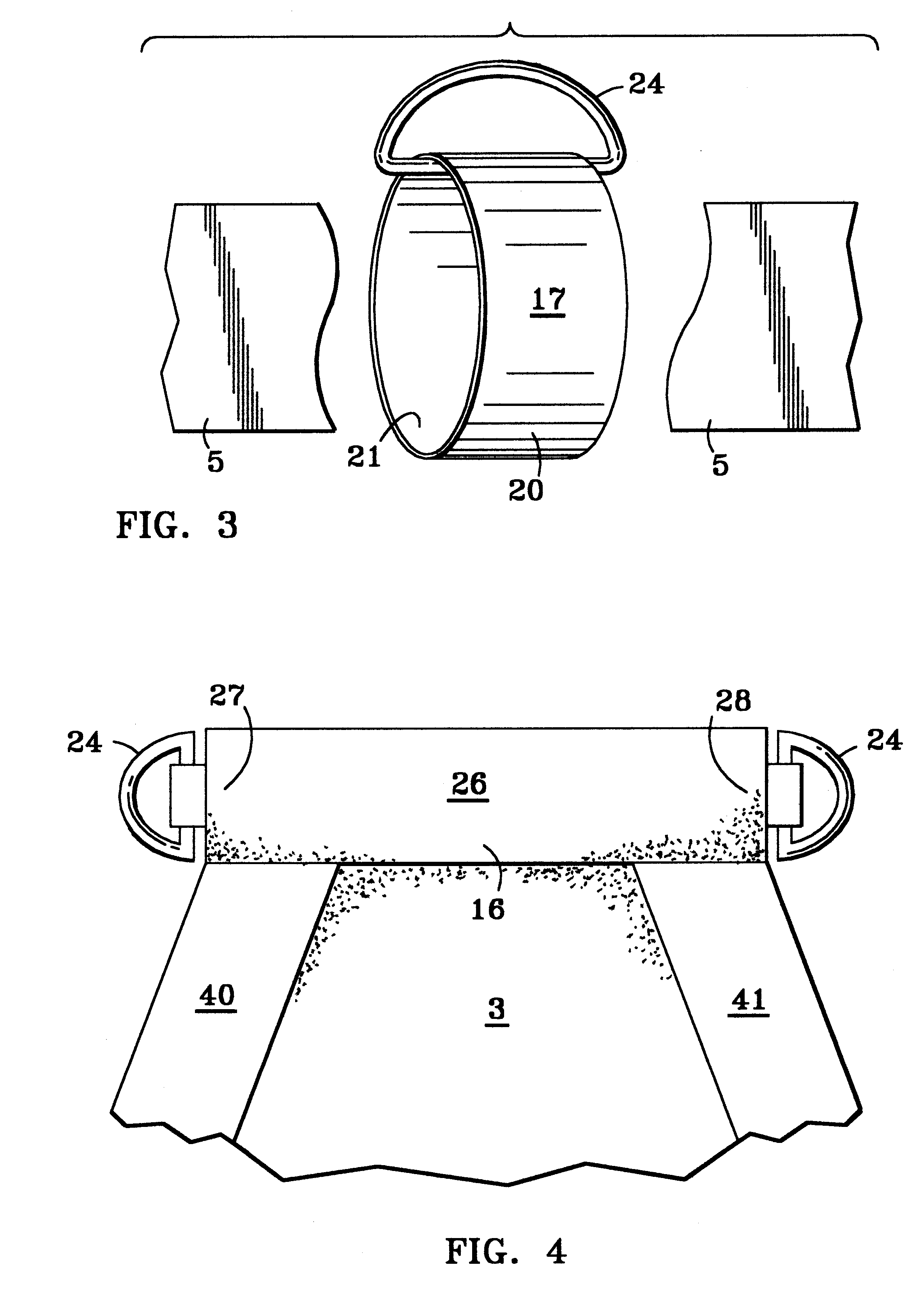Rehabilitative shoulder support
a shoulder support and shoulder technology, applied in the field of rehabilitation shoulder support, can solve the problems of repeated dislocation, permanent impairment of sustained injuries, concomitant swelling of surrounding tissue, etc., and achieve the effect of removing all stress and weigh
- Summary
- Abstract
- Description
- Claims
- Application Information
AI Technical Summary
Benefits of technology
Problems solved by technology
Method used
Image
Examples
Embodiment Construction
As per FIG. 1, the instant invention is a rehabilitative shoulder support (1) shown in place on a wearer (2). For understanding's sake, the wearer is assumed to have an injured left shoulder, and the wearer's arm is outstretched and elevated.
As per FIGS. 1 and 2, the instant invention has a sleeve component (3). The sleeve component is constructed such that it conforms to the shape of the wearer's shoulder and completely encircles the wearer's upper arm. Applicant believes that the sleeve component should be composed of a material which is somewhat supple and elastic. In the preferred embodiment, Applicant constructs the sleeve component from Neoprene; however, other materials which have a relatively smooth texture, which will conform to the wearer's shoulder and arm, and which are somewhat elastic would work equally well. It should be remembered that the rehabilitative shoulder support could potentially be worn up to 24 hours each day, and for extended periods of time (weeks to mon...
PUM
 Login to View More
Login to View More Abstract
Description
Claims
Application Information
 Login to View More
Login to View More - R&D
- Intellectual Property
- Life Sciences
- Materials
- Tech Scout
- Unparalleled Data Quality
- Higher Quality Content
- 60% Fewer Hallucinations
Browse by: Latest US Patents, China's latest patents, Technical Efficacy Thesaurus, Application Domain, Technology Topic, Popular Technical Reports.
© 2025 PatSnap. All rights reserved.Legal|Privacy policy|Modern Slavery Act Transparency Statement|Sitemap|About US| Contact US: help@patsnap.com



